
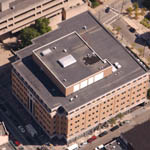 |
EPDM EPDM (Ethylene Propylene Diene Monomer) is composed of vulcanized rubber and has been used in many roofing applications since the 1960s. It is a flexible material and offers excellent resistance to ozone, ultraviolet, weathering and abrasion, though it is not resistant to animal and vegetable oils or aromatic, halogenated and aliphatic solvents. The membrane comes in several thicknesses, reinforced or non-reinforced, and can be black, dark gray or, from some manufacturers, white. |
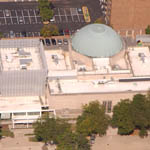 |
Thermoplastic Olefin (TPO) Thermoplastic roof systems are versatile and can be formulated from such chemical compositions as PVC (Polyvinyl Chloride), CPE (Chlorinated Polyethylene) and TPO (Thermoplastic Olefin). Used in single-ply applications, thermoplastics can be obtained in a range of thicknesses and are available in custom colors. Chemical resistance is different for each composition and it is recommended to consult the manufacturer’s literature for specific exposure. |
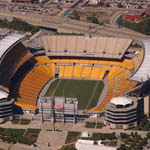 |
Modified Bituminous Modified Bituminous Roof systems are composed of reinforcing fabrics, such as polyester or glass fiber, impregnated with polymer-modified asphalt. This results in a sturdy, heavyweight roofing material that can be manufactured in a variety of thicknesses and surfaces. Different surfaces are available in different colors and provide a variety of protections. |
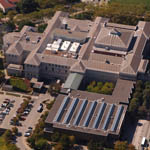 |
Built Up Roofing Built-up Roof systems are made up of multiple layers of rolled reinforcing fabric, such as organic or synthetic felt, bound in place by “cold” adhesive or inter-ply bitumen, most commonly asphalt or cold tar. Despite their numerous physical and chemical differences, both asphalt and cold tar have excellent resistance to moisture and weathering and possess good cohesive and adhesive properties. These systems have maximum slope limitations but are well known for their durability and long life. |
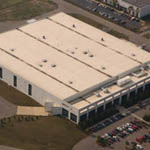 |
Green Roof Green roofs are environmentally friendly, able to filter pollutants and carbon dioxide out of the air. They can drastically improve a roof’s insulation value, reducing heating and cooling costs. Green roofs may dramatically improve a roof’s lifespan, as much as two to three times. They also reduce storm water runoff and help combat urban heating in the summer. |
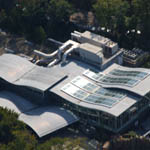 |
Metal Roof Metal roofing can be manufactured from a variety of metals and is thus suitable for many different applications. Some metals, such as stainless steel and aluminum can be left uncoated and unpainted, though others require coating to enhance weather resistance and improve longevity. When installed at an adequate slope, metal roofs are water shedding. |
